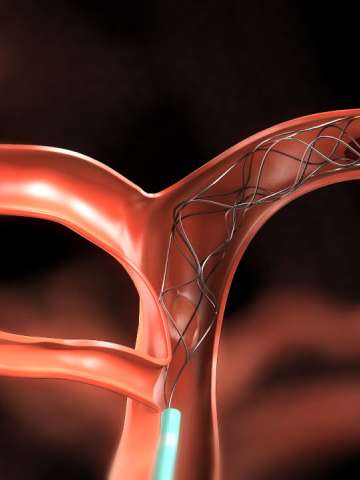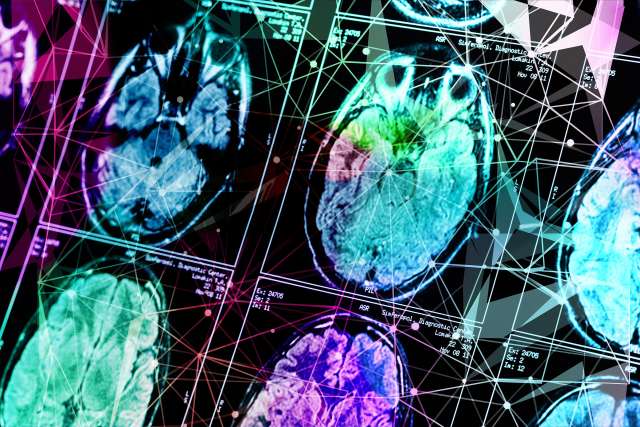Interventional Neuroradiology
Our interventional neuroradiologists offer expert, minimally invasive procedures to treat blood vessel disorders of the brain and spine. We are national and international leaders in interventional treatments.

UCLA Health excellence in interventional neuroradiology
Our interventional neuroradiologists evaluate and treat adults and children with a wide range of disorders affecting blood vessels of the brain and spine (cerebrovascular disorders). We offer comprehensive, advanced care, building on UCLA Health’s long history of innovation and excellence.
Highlights of our program include:
Innovation and invention: We are known for inventing a coiling technique to treat brain aneurysms. Since developing and using the Guglielmi detachable coils, these and later versions of the coils have revolutionized aneurysm treatment.
Full-spectrum, team-based care: We have highly integrated care teams, so if we have to use different or more invasive approaches, we have neurologists and neurosurgeons on standby to assist with treatment. Our specialists also work in the Vascular Birthmark Center along with our colleagues in plastic surgery, dermatology, head and neck surgery and ophthalmology. We provide the full spectrum of treatment options, using the most appropriate care plan for each patient.
Leaders in interventional stroke treatment: UCLA Health interventional neuroradiologists have paved the way in interventional stroke care. Our division invented the MERCI device, the first device approved for opening blood vessels in an acute stroke. We were also the first institution in Los Angeles designated as a Comprehensive Stroke Center by the Joint Commission.
Conditions interventional neuroradiologists treat
Interventional neuroradiologists treat disorders that affect blood vessels in the brain and spine. We offer comprehensive care for a number of conditions, including:
- Acute stroke: A medical emergency that occurs when a blockage in the carotid (neck) arteries disrupts blood flow to the brain
- Arteriovenous malformation (AVM): An irregular connection between arteries and veins in the brain that can interrupt blood flow
- Brain aneurysm: A bulge in one of the brain’s blood vessels that can cause life-threatening bleeding if it bursts
- Carotid atherosclerosis: Plaque buildup and narrowing in the carotid arteries, the blood vessels in the neck that carry blood to the brain
- Cerebral venous sinus thrombosis: A blood clot in the venous sinuses, part of the brain’s blood drainage system
- Dural arteriovenous fistula: Irregular connections between arteries and veins in the tissue that covers the brain and spinal cord (dura mater)
- Moyamoya disease: A chronic condition that causes progressive narrowing in the carotid arteries
- Pediatric craniofacial vascular malformation: Atypically formed blood vessels that are present at birth and eventually become visible on the face, like a birthmark
- Spinal vascular malformation: Irregular tangles of blood vessels occurring in the spinal cord
- Vein of Galen malformation: A rare type of AVM that develops before birth and affects the vein of Galen, a large vein that takes blood from the brain to the heart
- Vertebral compression fractures: An injury that occurs when one of your spinal bones (vertebrae) fractures and decreases in height by at least 15%
Tests and treatments we offer
Interventional procedures use small, hollow tubes (catheters), specialized wires and imaging scans to access and treat blood vessels. Tests and treatments may include:
- Angiography: This test allows physicians to view the brain’s blood vessels by using contrast dye and imaging such as X-rays or CT scans.
- Angioplasty and stenting: We insert a catheter through an artery in the groin, then guide it to blocked carotid arteries. We place a filter device into the blood vessel to capture any loose debris during the procedure. Then we inflate a balloon in the artery and place a flexible metal or mesh tube (stent) to help keep the artery open. We often use this technique to treat carotid atherosclerosis.
- Balloon occlusion test: We temporarily block one of the four main arteries carrying blood to the brain to determine if it can be closed safely, without affecting function. We may use this test to establish a treatment plan for an aneurysm or vascular malformation.
- Embolization: This minimally invasive technique blocks arteries that supply blood to tumors, malformations or other diseased tissue. We use catheters and small particles, glue or coils to target specific arteries. This procedure may be used to treat arteriovenous malformations, brain aneurysms, dural arteriovenous fistulas and spinal vascular malformations.
- Endovascular clot treatments: We insert a catheter into a blood vessel and guide it to a blood clot. Then we send a clot-busting medicine or clot-capturing device through the catheter. We may use these techniques to treat a stroke or cerebral venous sinus thrombosis.
- Inferior petrosal sinus sampling: We use X-rays and catheters to take small blood samples from the inferior petrosal sinuses, the main veins that carry blood away from the pituitary gland. We use this test to measure hormone levels and diagnose or rule out conditions such as pituitary tumors or Cushing’s disease.
- Vertebroplasty, sacroplasty and kyphoplasty: We can treat vertebral compression fractures by stabilizing the fracture with a special cement (vertebroplasty or sacroplasty) or restoring height by inflating a balloon inside the vertebra (kyphoplasty) and then injecting the cement. This is done through a needle that is carefully placed into the fractured vertebra using X-ray guidance.
Our expert team
Our interventional neuroradiologists are experts in disorders affecting blood vessels in the brain and spine. We continue to build on UCLA Health’s long history of innovation by researching, developing and implementing new technologies and treatment options. Patients benefit from a comprehensive, team-based care approach.
Director
Our Physicians
Our Fellows
Our Staff



Contact us
Call 310-267-8761 to request an appointment with an interventional neuroradiologist at UCLA Health.
Find your care
Our interventional neuroradiology team has paved the way for interventional procedures, creating several of the devices and techniques widely used today. Call 310-267-8761 to learn more about our services.








